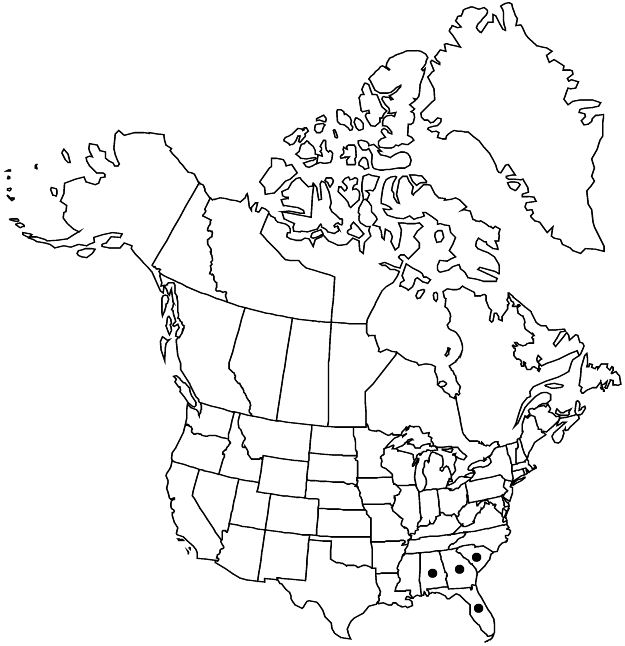Crataegus lacrimata
Torreya 1: 97. 1901.
Shrubs or trees, 50(–80) dm, branches strongly weeping. Stems: twigs: new growth pubescent, 1–2-years old gray or purple-gray, slender; thorns on twigs straight, 1–2-years old purple-gray, fine, 1.5–3 cm. Leaves: petiole slender, length 20–30% blade, pubescent, glandularity not recorded; blade oblong or ± narrowly obtrullate, sometimes elliptic, 1–2 cm, thin, base cuneate, lobes 0, sometimes very slightly lobed subterminally, margins subentire or finely serrate in distal 1/2, veins 1 or 2 per side (exiting in distal 1/2 of leaf), apex usually truncate to obtuse, sometimes cuspidately subacute, surfaces glabrous. Inflorescences 1–3-flowered; branches glabrous; bracteoles ± caducous, linear, margins eglandular or nearly so, glabrous. Flowers 15 mm diam.; hypanthium glabrous; sepals triangular, 2–3 mm, margins ± entire, abaxially glabrous; anthers cream; styles 3 or 4. Pomes yellow, yellow blushed red, or red, suborbicular, 8 mm diam., glabrous; sepal remnants patent-reflexed; pyrenes 3 or 4.
Phenology: Flowering Mar–Apr; fruiting Jul–Aug.
Habitat: Pinewoods, open scrub, sandy soil
Elevation: 10–100 m
Distribution

Ala., Fla., Ga., S.C.
Discussion
Crataegus lacrimata is found abundantly over parts of the Florida panhandle and through adjacent Alabama and Georgia to South Carolina.
Crataegus lacrimata is an upright, usually single-stemmed shrub with slender, more or less weeping branches and small, narrow, glabrous, bright green leaves. The plants are easily recognized among ser. Lacrimatae, the whole plant being almost completely glabrous, having narrow, nearly unlobed leaves, and being the only member of the series to possess more or less eglandular bracteoles. Only with poor material might the pubescent inflorescence of C. munda (dwarf, non-lacrimate) or C. crocea (tall, lacrimate) be confused. A form similar to C. lacrimata and with the same range, but apparently discontinuously larger, has longer leaves (blades 2.2–4 cm versus 1–1.7 cm) and larger flowers (petals 7–9 mm versus 5–7 mm) and more orange-colored ripe fruit.
Selected References
None.